
Welcome to the captivating world of South West England, where breathtaking coastlines, ancient monuments, and charming villages await your discovery.
Start your journey on the iconic Jurassic Coast, adorned with millennia-old fossils, and make your way to the southernmost and westernmost points of England. Then, prepare to be enchanted as you embark on a walkable adventure along the South West Coast Path. This 630-mile trail follows the coast of the entire peninsula and will reward you with one awe-inspiring view after another along dramatic coastline.
Next, delve into the rich tapestry of history that graces the landscape, where ancient monuments dot the countryside. Uncover the mysteries of quoits, and stone circles, and even stroll along what may be England’s oldest village street. For fans of Poldark, this is your chance to explore the very landscape where the beloved series was filmed and delve into the fascinating history of tin mining, where the remnants of beam engines still punctuate the scenery to this day.
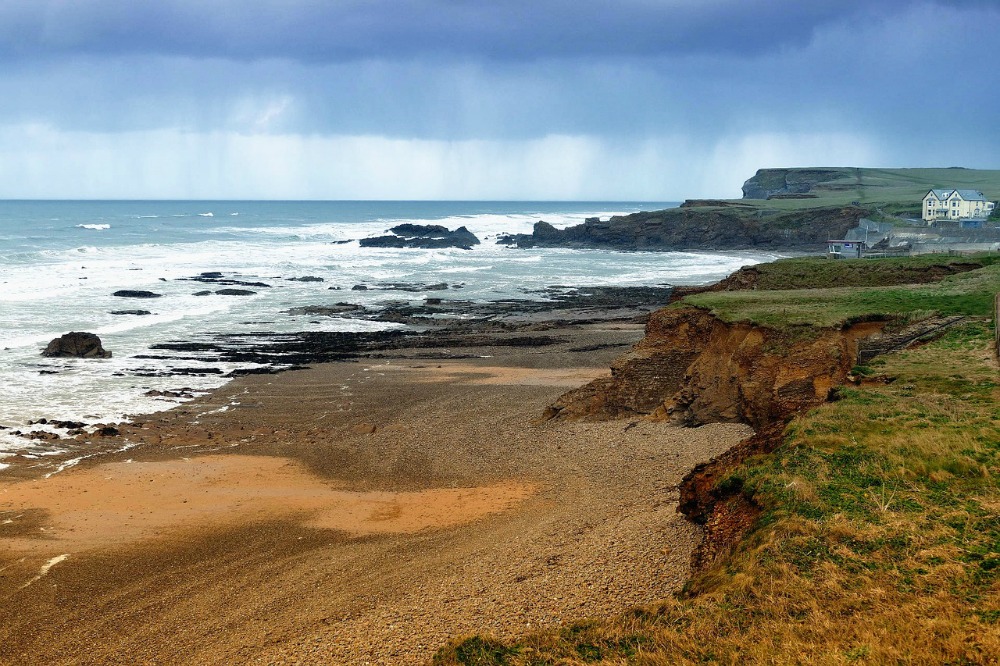
But it’s not just history that awaits you here. A visit to South West England is a sensory delight. Indulge in the delectable offerings of charming villages, where you can savour a mouthwatering Cornish pasty or partake in a delightful afternoon tea. And remember, when it comes to the age-old debate of whether to put the jam or cream first on your scone, it all depends on whether you find yourself in Devon or Cornwall. Each region has its own “right” way!
So, whether you’re planning a weekend getaway, a week-long escape, or an extended exploration, we present to you eight exceptional destinations in South West England. These recommendations come from both fellow travel bloggers and ourselves, ensuring that you experience the very best this remarkable region has to offer.
This post may contain affiliate links. Please read our full disclosure policy here.
TABLE OF CONTENTS
8 Great Places to Visit in South West England
Located in West Dorset, Lyme Regis is a lovely seaside town on the Jurassic Coast, so named because of the large number of fossils found in the area. The town is mentioned in the Domesday Book and has been the setting for movies and novels, one of the most famous movies being Jane Austen’s novel, Persuasion.
Originally just called Lyme it received a Royal Charter from King Edward 1 in 1284 and became Lyme ‘Regis’. After many years as an important shipbuilding port with its famous Cobb Harbour, the town now survives mostly on tourism.
The steep, narrow streets with beautiful Georgian architecture and historic town centre make this town one of the most popular seaside resorts in Dorset. The pebble beach and Cobb Harbour are a major part of the town, as Lyme is built right on the water’s edge.
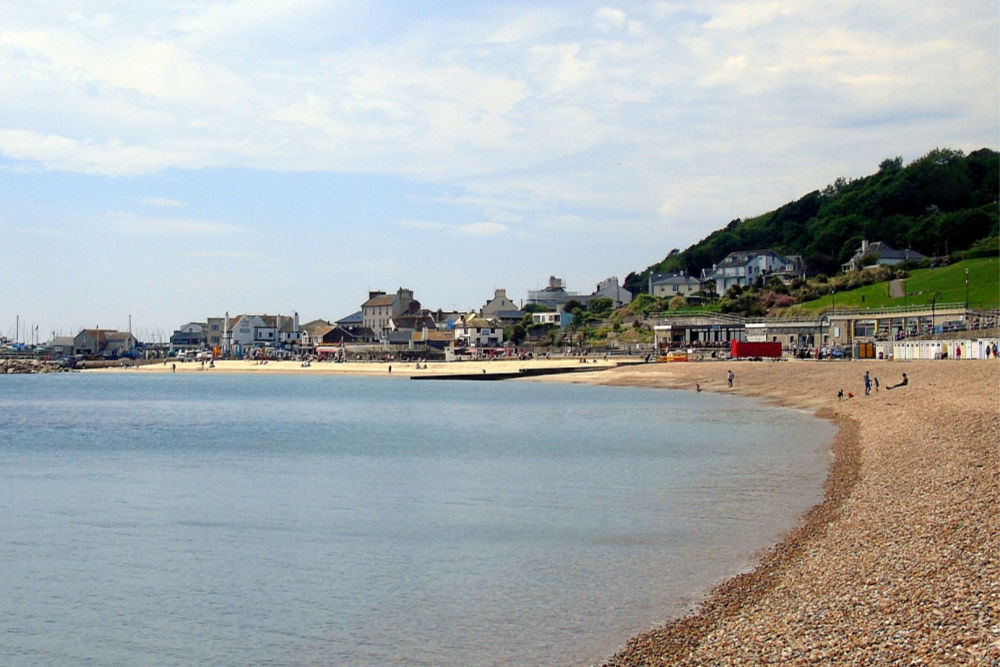
MUST DO IN LYME REGIS:
- Cobb Harbour: Visit the ‘Cobb’ harbour, stroll around the harbour and imagine yourself in the setting for Jane Austen’s Persuasion. The Cobb is a beautiful spot to spend time and one of the most historically significant parts of Lyme Regis.
- Dinosaurland Fossil Museum: Visit this wonderful museum with more than 1000 fossils on display and then take a stroll on Monmouth Beach at low tide and spot fossils.
- See the town mill and do a tour: Rescued after becoming derelict, the mill dates back to 1340 when wheat was milled for bread and malt for beer. Part of the mill is a working museum and around the courtyard, artists display their work in galleries and can often be seen in action. Afterwards, stop in at the tea rooms where they serve up delicious food.
Contribution from Jane of Fun Things to Do in Melbourne
Ilfracombe on the north Devon coast is a picture-postcard seaside town known locally for its ‘curious coastal charm’, craggy scenery and hilltop walks. Fishermen’s cottages, quaint buildings, shops, galleries, pubs, and restaurants line the old harbour.
Fresh, locally caught fish and seafood are sold daily from the quayside. Winding alleyways and lanes criss-cross the town and there’s a choice of sheltered sandy bays or craggy beaches for days by the sea.
Coastal walks with stunning Devon scenery are a few steps away and the South West Coastal Path passes right by the town. Capstone is the perfect place to catch a sunset and the views from Lantern Hill are worth the climb.
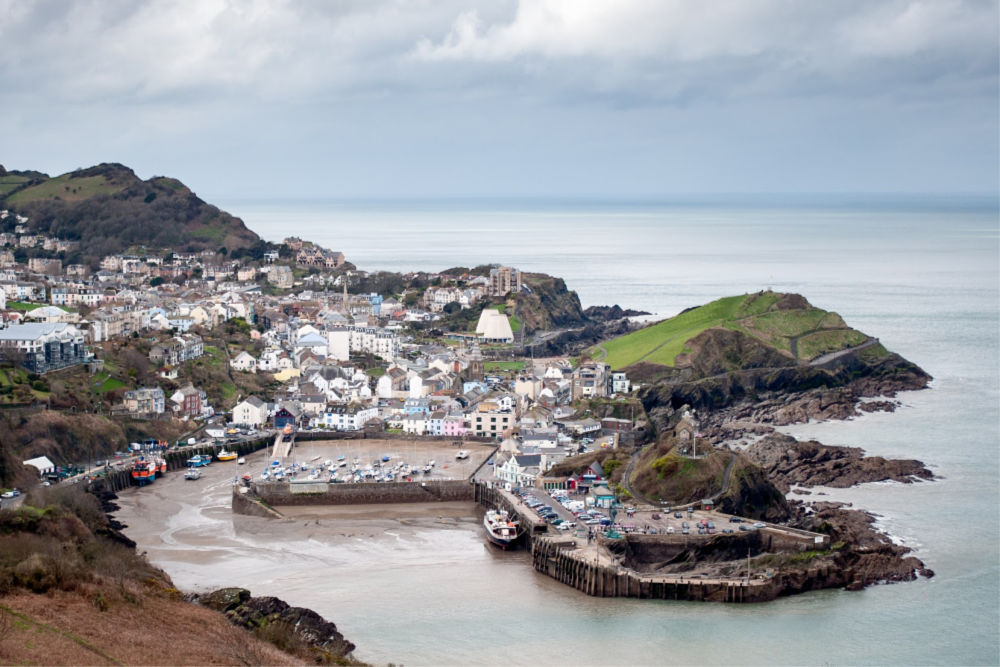
MUST DO IN ILFRACOMBE:
- Wildlife cruise: Take a wildlife cruise on a boat trip out of the harbour on the Ilfracombe Princess. Frequent sightings of seals, dolphins, and nesting birds along with stunning views of the coast can be seen from the boat.
- Visit Verity: Visit Verity the 20-metre-high statue that guards the harbour. You’ll either love or hate the divisive statue and will appreciate the true Damien Hirst style when you see Verity up close.
- Tunnels Beaches: Spend a day at Tunnels Beaches where you can walk through the Victorian tunnels to a sheltered sandy beach with its own shallow pool to watch the sea beyond crashing onto the rocks. This is a perfect spot for families and picnics.
Contribution from Suzanne Jones of The Travelbunny
Welcome to the charming town of Porthcurno in Cornwall, where a captivating tale of global telecommunications unfolds. Situated on the rugged Atlantic coast of far southwest England, this small town offers more than meets the eye.
Indulge in the tranquillity of a protected beach nestled within a picturesque cove, inviting you to unwind and soak up the coastal beauty. Embark on invigorating walks along the South West Coast Path, revealing stunning vistas of the surrounding coastline.
Immerse yourself in history as you explore the beach that served as the landing point for oceanic communications cables. During World War II, the preservation of these vital communication channels was of paramount importance. Witness the legacy firsthand by venturing into the cliffside tunnels, ingeniously crafted to safeguard crucial equipment. For an extra thrill, climb the escape stairs at the back of the tunnels and be rewarded with breathtaking views across the cliffs.
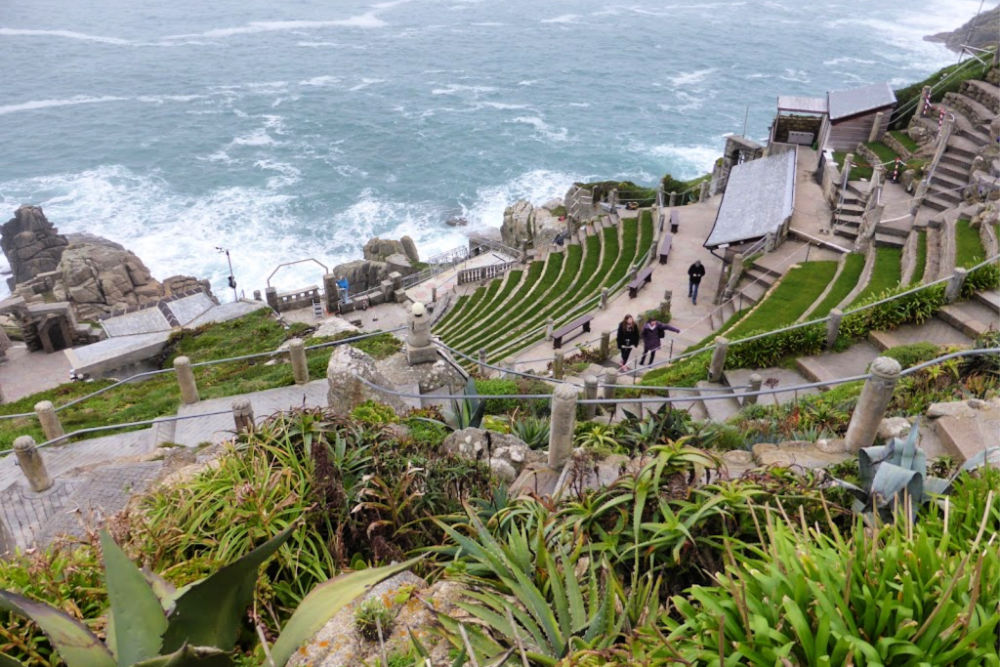
MUST DO IN PORTHCURNO:
- Minack Theatre: An open-air theatre cut into the granite cliffs just outside Porthcurno, the Minack Theatre was created by Rowena Cade and her gardener Billy Rawlings and now hosts plays and other events with the Atlantic Ocean as a stunning backdrop.
- Telegraph Museum: Celebrating Porthcurno’s role in the growth of global communications, the Telegraph Museum documents the history of how this small bay became the endpoint of some of the earliest oceanic communications cables. There is a small hut down on the beach where cables still come ashore today.
- South West Coast Path: The South West Coast Path traverses the entire South West Coastline for a distance of 630 miles! From Porthcurno heading east, you could visit Penberth Cove via Logan Rock within two miles or heading west, Porthgwarra Beach via St Levan’s Holy Well – all the while enjoying the rugged Atlantic coastline of Cornwall.
Nestled within the embrace of the third deepest natural harbour in the world, Falmouth has always been closely intertwined with maritime adventures.
For 160 years, this bustling town served as the hub for the essential packet service, facilitating the shipping of mail to Britain’s vast empire. As Royal Navy ships returned home, Falmouth often stood as their welcoming port and it was within these shores that HMS Beagle, accompanied by the renowned Charles Darwin, completed its legendary survey voyage. Additionally, it was in Falmouth that news of Britain’s triumph in the Battle of Trafalgar made landfall, resonating with historic significance.
During the tumultuous days of World War II, Falmouth played a pivotal role as a staging point for both the US Navy and Army. It was from here that the daring and iconic raid on the dry docks at Saint Nazaire was launched, etching its mark in the annals of history.
Today, Falmouth stands as an inviting destination, drawing in visitors with its captivating castle, picturesque harbour, and charming cobbled streets adorned with an array of intriguing shops. Prepare to embark on a delightful exploration of this beloved town, where maritime heritage seamlessly blends with a popular tourist haven.
Check out the Falmouth App for lots more information:
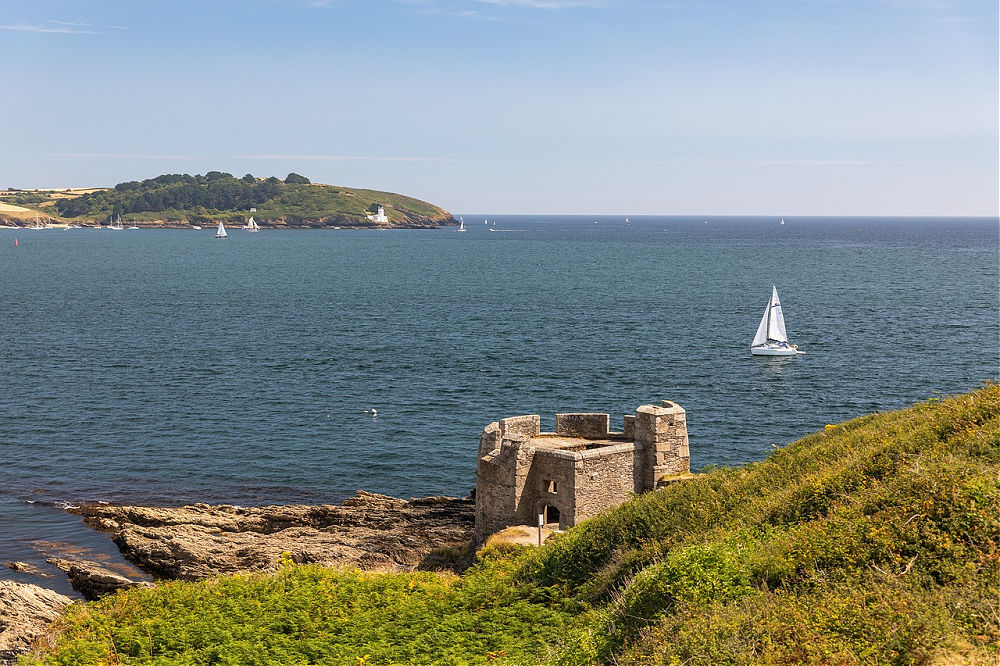
MUST DO IN FALMOUTH:
- Pendennis Castle: Immerse yourself in the captivating history of Pendennis Castle, one of Henry VIII’s most magnificent coastal fortresses. Standing proudly, it guarded the estuary of the Carrick Roads, alongside its counterpart, St Mawes Castle, on the opposite bank. Step back in time and embark on a journey through the ages, from the Tudor era to its crucial role in both World Wars. Experience the rich tapestry of Pendennis Castle’s legacy firsthand.
- National Maritime Museum: A journey through maritime history at this museum not only chronicles the captivating maritime heritage of Cornwall but also showcases remarkable maritime objects and stories from across the globe. As the proud custodian of the UK’s National Small Boat Collection, it offers a unique opportunity to delve into the world of seafaring and explore a diverse array of small boats with significant historical value.
- St Mawes Ferry: As well as a great way to see Falmouth from the water, St Mawes Ferry has the added benefit of taking you to the pretty village of St Mawes. Here you can explore St Mawes Castle which protected the entrance to the harbour alongside the larger Pendennis Castle on the opposite bank.
With a rich maritime heritage, Plymouth has long been intertwined with the sea, showcased by the Devonport Naval base gracing its western edge. As the largest naval base in Western Europe, it proudly continues to serve the Royal Navy to this very day.
Step back in time to 1620 when history was made, as the brave Pilgrim Fathers embarked on their voyage to the new world from Plymouth, establishing the second settlement that would eventually become the United States of America.
During the tumultuous chapters of both world wars, Plymouth’s naval significance made it a vital transit point for troops, leading to its heavy bombing during World War II. However, the city’s spirit prevailed, and once the war ended, the city center was lovingly rebuilt. Amidst this rebirth, Charles Church stood as a powerful symbol, partially destroyed by incendiary bombs, yet preserved as a poignant memorial to the Plymouth Blitz.
Today, Plymouth’s stunning coastline beckons, adorned with a diverse mix of fortifications. Discover the awe-inspiring Royal Citadel, the steadfast Western King Battery, and multiple harbours brimming with boats of all sizes, offering endless opportunities for exploration and enjoyment.
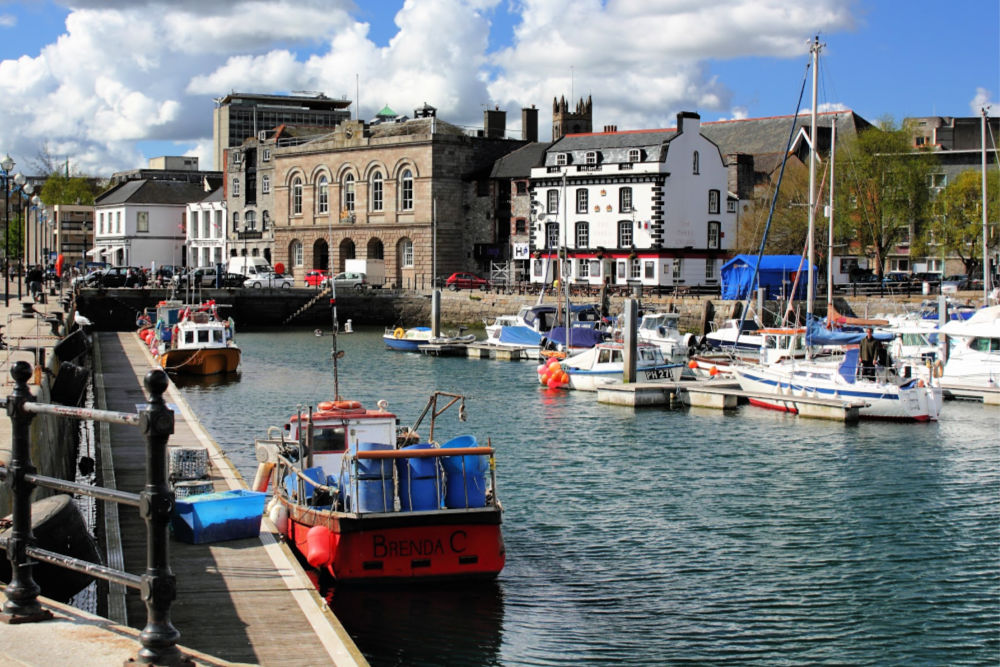
MUST DO IN PLYMOUTH:
- Smeaton’s Tower: This architectural gem with a history spanning over 250 years, once relied on 24 candles to guide and warn ships of nearby perils. Today, you have the opportunity to ascend its 93 steps and reach the lantern room, where breathtaking panoramic views of Plymouth Sound and the city await.
- National Marine Aquarium: Prepare to be mesmerized by the wonders of the deep at the largest public aquarium in the UK. Dive into a captivating underwater world, where marine creatures from the British Isles and beyond reside, including remarkable species from as far as the majestic Great Barrier Reef in Australia.
- Royal Citadel: Witness the formidable strength of this still active military site that has dutifully guarded the south coast of England for over three centuries. Explore its historic grounds, immersing yourself in the legacy of its steadfast defence and marveling at its enduring significance.
Welcome to the enchanting realm of Poldark Country, a captivating slice of Cornwall where the beloved BBC adaptation of Winston Graham’s novels came to life. While the filming spanned various corners of Cornwall, it was the Penwith Peninsula, particularly the area around Botallack, that played a prominent role in capturing the novels’ evocative atmosphere.
Prepare to immerse yourself in the rich tapestry of Cornwall and West Devon’s tin mining heritage, which spans an impressive four millennia. As you explore the region, you’ll encounter remnants of old pumping engines scattered across the landscape, serving as poignant reminders of a bygone era. The fascinating history of these mining endeavours will undoubtedly leave a lasting impression.
But Poldark Country offers so much more than its mining legacy. Let the rugged coastline and breathtaking landscapes enchant your senses as you embark on a journey through eons of history. Whether you’re a fervent fan of the books and TV series or simply seeking a destination brimming with natural beauty and a storied past, Poldark Country is an absolute must-visit.
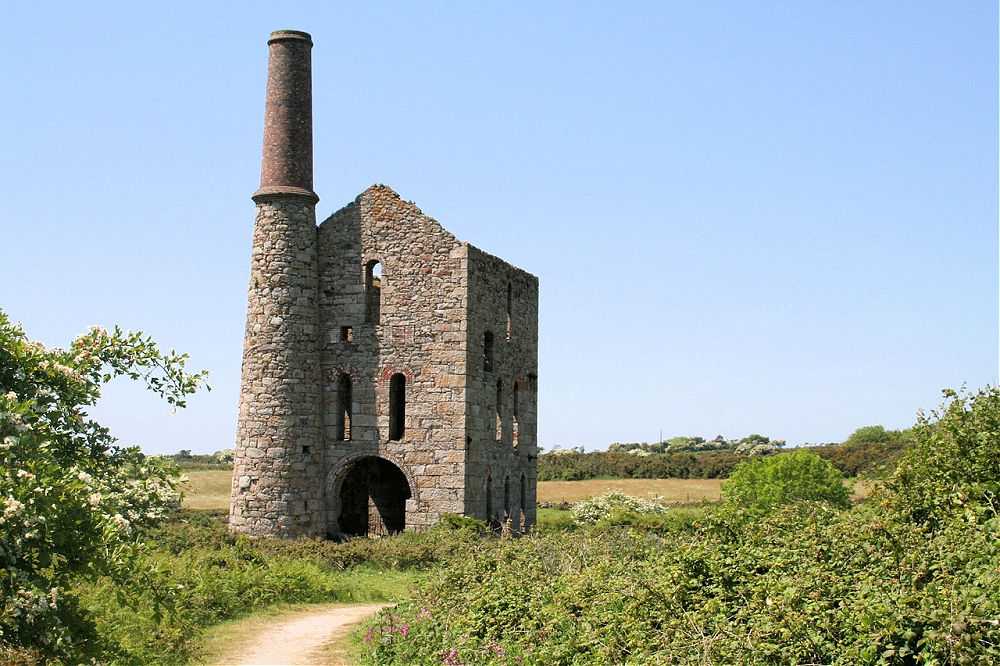
MUST DO IN POLDARK COUNTRY:
- Geevor Tin Mine: Step into the captivating world of Geevor, a former tin mine that ceased operations in 1990. In its prime, it boasted an extensive network of 85 miles of tunnels spread across 17 levels. Today, you have the unique opportunity to embark on a guided tour of the plant, where the precious tin was extracted from the ore.
- Levant Beam Engine: Discover the scattered remnants of beam engines, a testament to the ingenuity of the past in this captivating corner of Cornwall. These remarkable structures once played a vital role in preventing mine flooding. However, amidst the ruins, an extraordinary gem awaits at Levant where you can witness the world’s sole Cornish beam engine that continues to operate by the power of steam, right on its original site.
- Botallack Mine: Immerse yourself in the beautiful scenery where the remains of a beam engine cling to the rugged cliffs, creating an iconic image of this remarkable area. These structures were strategically positioned close to the water’s edge, as they served as an underwater mine with tunnels extending deep into the Atlantic Ocean. But that’s not all—further exploration awaits amidst the ruins of an intriguing arsenic factory, offering a glimpse into the region’s industrial past. And don’t miss the Botallack Mine Count House, a historic site with more tales of mining legacy.
Transport yourself to the captivating realm of Tintagel, a place that sparks imaginations and invokes the legendary tales of King Arthur. According to ancient lore, this very coastline witnessed the birth of the fabled king, a story that has enchanted devotees for centuries and continues to do so today.
As you wander through the village of Tintagel, you’ll encounter an array of King Arthur-themed souvenirs, a testament to the enduring fascination with this mythical figure. But there’s much more to discover in this enchanting place. Marvel at the romantic and enigmatic ruins of Tintagel Castle, immersing yourself in its rich history and dramatic ambiance. Allow the beauty of the surrounding headland to captivate your senses, offering breathtaking scenic views that will stay etched in your memory.
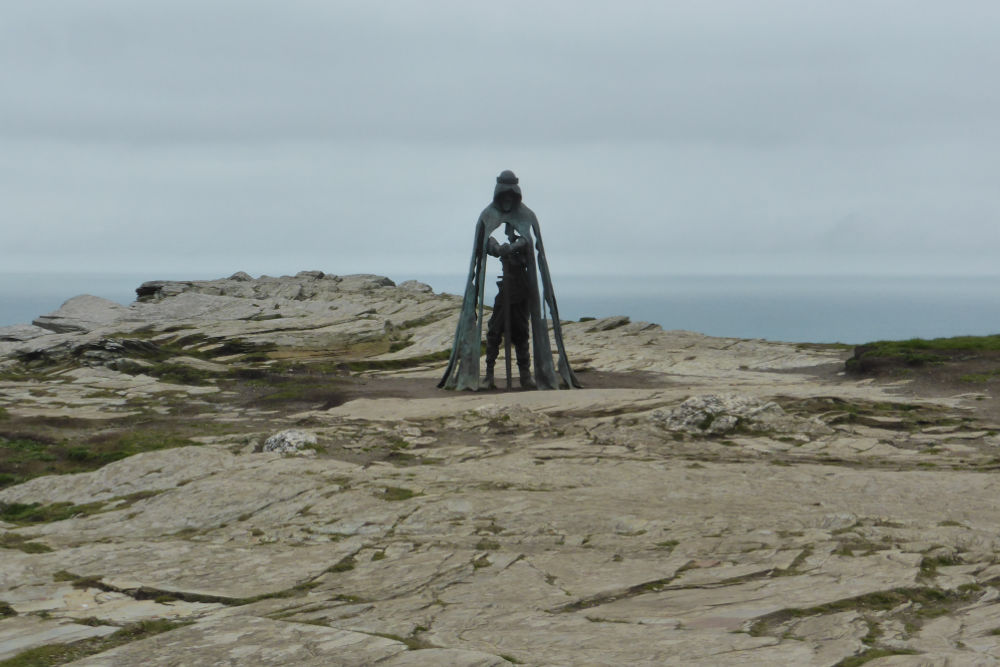
MUST DO IN TINTAGEL:
- Tintagel Castle: Earl Richard of Cornwall constructed this medieval fortification around 1240 on the peninsula of Tintagel, choosing this very spot due to its legendary association as the birthplace of King Arthur. Though time has taken its toll, a few remnants of the fortification still await exploration. Walk across the footbridge to reach the ruins where breathtaking views will surround you. Then, beneath the island, intriguing secrets lie in the form of two tunnels. Legend has it that one of these tunnels serves as a path for the wandering spirit of Merlin, who is said to occasionally make his presence known through ethereal whispers.
- St. Nectan’s Glen: Indulge in a serene woodland stroll, culminating in the enchanting sight of a waterfall, at this idyllic destination. Don’t forget to come prepared with your trusty rubber boots (Wellies) to fully appreciate the waterfall, as you venture into the shallow pool at its base. If you happen to forget your boots, don’t worry as they provide borrowed boots for your convenience. Explore various paths that wind through the woods, unveiling more hidden waterfalls along the way. And when your sweet tooth beckons, satiate your cravings with delectable scones and tea at their delightful outdoor tea room, nestled near the cascading beauty of the waterfall.
- The Cornish Bakery: Indulge in an authentic Cornish culinary delight at the Cornish Bakery, where handmade pasties reign supreme. Treat your taste buds to the scrumptious flavours crafted with care. If it’s your first pasty experience, try the “Traditional” filling and savour this warm and hearty lunch.
Home to the southernmost point in Britain—the remarkable Lizard Peninsula – the Lizard Heritage Coast is designated by the government as an Area of Outstanding Beauty, and it’s easy to see why. The peninsula boasts a breathtaking blend of rugged, dramatic coastlines and serene heathlands, creating a truly enchanting landscape.
Unlike the bustling Land’s End Peninsula, the Lizard Peninsula does not boast a coastal road. Instead, it beckons visitors to embark on foot and immerse themselves in its scenic coastal paths. Prepare for an unforgettable journey as you traverse these trails, which unveil some of the country’s most stunning beaches along the way.
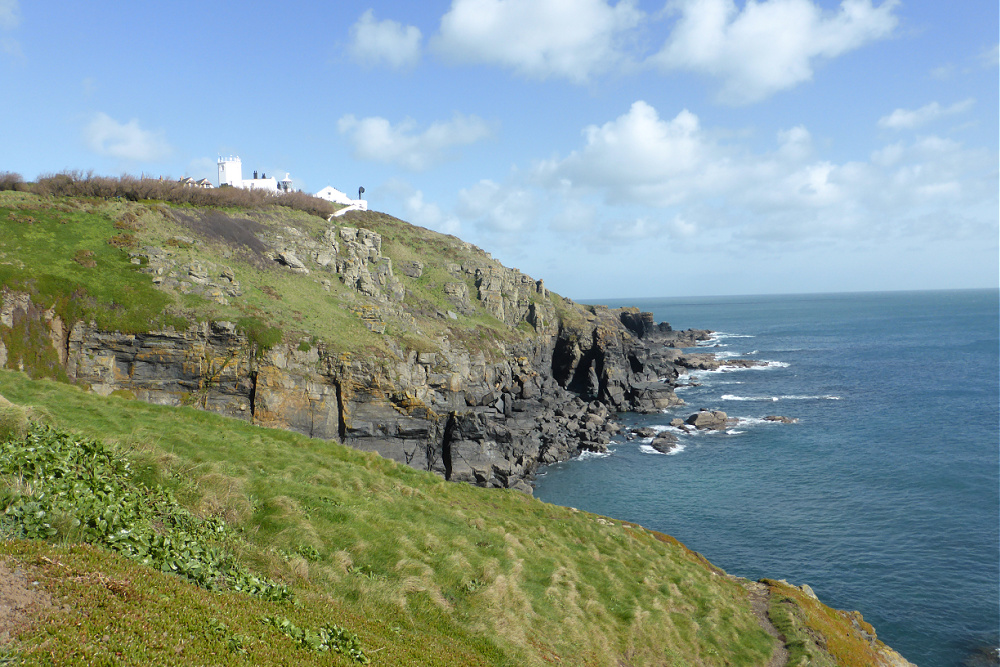
MUST DO ON LIZARD HERITAGE COAST:
- Lizard Point: This is Britain’s southernmost point where dramatic rocky cliffs meet the crashing waves of the sea, adorned in the most mesmerizing shades of blue. As you explore the coastline, you’ll discover charming fishing ports nestled along the shore. These quaint havens are safeguarded by sturdy sea walls, shielding them from the mighty Atlantic winds. Indulge in a culinary delight as you visit restaurants that proudly serve freshly caught seafood, sourced directly from the bustling fleet of fishing boats.
- Kynance Cove: Prepare to be enchanted by one of Cornwall’s most picturesque and celebrated beaches, captivating both photographers and artists alike with good reason – it’s so pretty! Embark on a delightful journey as you follow the path that winds down the magnificent 200 ft cliffs, leading you to a charming, secluded cove adorned with a handful of small islands. Please note, however, that access to the sandy beach is only available for a limited time window—just a couple of hours before and after low tide.
- Marconi Centre: Step into the historic site where an extraordinary milestone in communication took place—the world’s first transatlantic radio transmission in 1901, from Poldhu, Cornwall to Signal Hill in St. John’s, Newfoundland, Canada. Today, this remarkable building is under the care of the National Trust, preserving its legacy for future generations to explore. Here you can wander through captivating exhibits, watch insightful short films, and marvel at the collection of radio equipment that graces the premises. Friendly and knowledgeable volunteers await to guide you through this fascinating journey, eagerly answering any questions you may have.
In conclusion, South West England beckons with its mesmerizing blend of natural beauty, captivating history, and delightful experiences. With a plethora of enchanting destinations to explore, this region offers something for every traveller’s taste.
So, why wait? Plan your adventure to South West England and immerse yourself in its awe-inspiring landscapes, ancient wonders, and charming villages. Follow in the footsteps of history, savour the culinary delights, and create memories that will last a lifetime.
Looking for more information to plan your visit to England? You may find these articles helpful.
RESOURCES | PLAN YOUR TRIP TO ENGLAND
To book flights, rental cars, accommodations, and activities for your trip, please check out our recommended travel providers, favourite apps and websites.
- For more great weekend ideas around England and the rest of Britain, check out one of my favourites – 52 Great British Weekends: A Seasonal Guide to Britain’s Best Breaks
- For weekend ideas in London – The Weekend Starts Here: Fifty-Two Weekends of Things to See and Do – will give you lots of ideas!
- For all things England, you can’t go wrong with Rick Steves! Check out his England travel guide, full episodes of his TV show, or download his app for excellent audio tours.
Some of the links in the post above are affiliate links. This means if you click on the link and purchase the item, we will receive an affiliate commission but this does not affect the price to you. Please read our full disclosure policy here.





